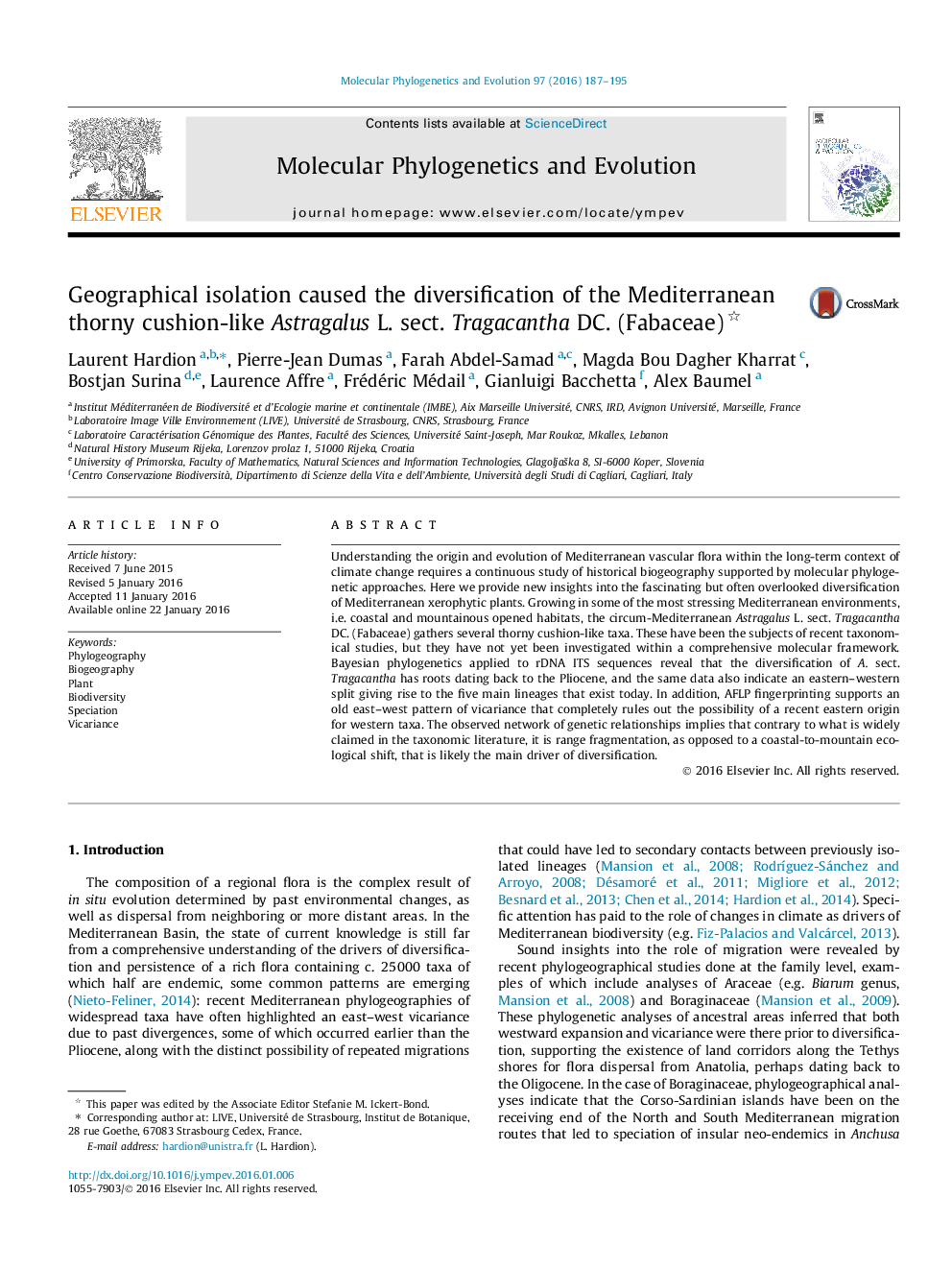| کد مقاله | کد نشریه | سال انتشار | مقاله انگلیسی | نسخه تمام متن |
|---|---|---|---|---|
| 2833705 | 1570800 | 2016 | 9 صفحه PDF | دانلود رایگان |

• The origin of the thorny cushion-like xerophytes from Astragalus sect. Tragacantha takes root in the middle of the Pliocene (4.4 Mya), between the Messinian salinity crisis and the onset of the Mediterranean climate.
• The phylogeographic structuring of the section is based on an old vicariance between East and West of the Mediterranean.
• Geographical isolation played a greater role than ecological differentiation in the diversification of the section, contradicting previous taxonomic literature.
Understanding the origin and evolution of Mediterranean vascular flora within the long-term context of climate change requires a continuous study of historical biogeography supported by molecular phylogenetic approaches. Here we provide new insights into the fascinating but often overlooked diversification of Mediterranean xerophytic plants. Growing in some of the most stressing Mediterranean environments, i.e. coastal and mountainous opened habitats, the circum-Mediterranean Astragalus L. sect. Tragacantha DC. (Fabaceae) gathers several thorny cushion-like taxa. These have been the subjects of recent taxonomical studies, but they have not yet been investigated within a comprehensive molecular framework. Bayesian phylogenetics applied to rDNA ITS sequences reveal that the diversification of A. sect. Tragacantha has roots dating back to the Pliocene, and the same data also indicate an eastern–western split giving rise to the five main lineages that exist today. In addition, AFLP fingerprinting supports an old east–west pattern of vicariance that completely rules out the possibility of a recent eastern origin for western taxa. The observed network of genetic relationships implies that contrary to what is widely claimed in the taxonomic literature, it is range fragmentation, as opposed to a coastal-to-mountain ecological shift, that is likely the main driver of diversification.
Figure optionsDownload as PowerPoint slide
Journal: Molecular Phylogenetics and Evolution - Volume 97, April 2016, Pages 187–195